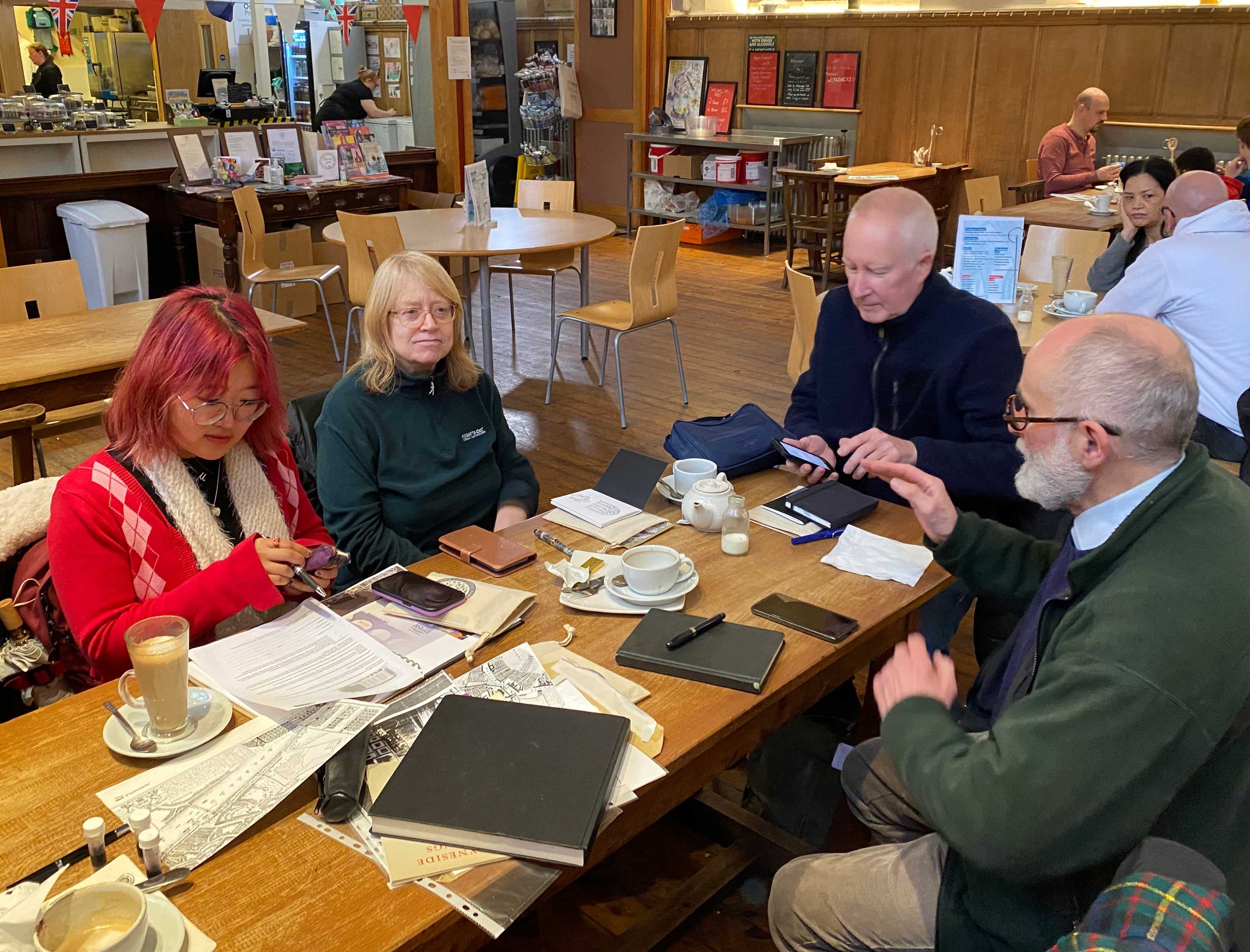History of Chapbooks
A chapbook is a small publication of up to about 40 pages, simply bound and cheaply produced. Our chapbooks are even simpler than that as they are a concertina fold. The idea arose from my own nature journals which span a 6-7 year period of nature observation.
Nature Journalling Chapbook.
The term "chapbook" was coined in the 19th century and is derived from the “Chapmen” who sold them. Chap simply means dealing or business so Chapmen were sellers of chapbooks. The surname Chapman means "marketman, monger, merchant".
Subjects covered by Chapbooks included: broadside ballads were popular songs, fairy tales, heroic tales, folklore and music hall. They were particularly important in the dissemination of popular culture to the common people, especially in rural areas. They were a medium of entertainment, information and (generally unreliable) history. Chapbooks were used for reading to family groups or groups in alehouses.
Joseph Crawhall and his woodcuts
At the very heart of the Figures of Tyne Public Art is the artistry of Joseph Crawhall. His images sum up the joyous nature of Newcastle people and the retelling of the history using the same quirky tone of voice is an essential component of how we are approaching the project.
Joseph Crawhall I (1793 - 1853) was an amateur landscape, animal and figure artist. He became owner of St Anne's Ropery in Newcastle, an affluent member of the Newcastle Society, holding positions of Sheriff and Mayor. Joseph Crawhall II (1821 - 1896) inherited his father's artistic talents and continued the family interest in art, music and angling.
Not only contributing to the cultural heritage of Newcastle through his own artwork, Crawhall also promoted the arts through his role as a Secretary for the Arts Association of Newcastle upon Tyne and through his continuing efforts to preserve local architecture.
His legacy was to reproduce woodcuts and engravings associated with ancient chapbooks and ballad sheets. Thomas Bewick was one of his decisive influences. He went on to produce many books, illustrated by himself. His first (printed by himself in 1859) was entitled 'The Compleatest Angling Booke That Ever was Writ'. The second edition (printed in 1881) contained illustrations from his son, Joseph Crawhall III. Other books include 'Chorographia' and 'A Beuk o’ Newcassell Sangs'.
Survey of Newcastle illustrated by Joseph Crawhall
So what we are doing, In guess, is to carry on that tradition of producing books of sketches, stories and poetry that have a personal resonance and connection for us.
The Figures of Tyne Art Group are currently meeting every Thursday at the Laing Art Gallery cafe. A typical session involves coffee and chats, sharing of our drawings and ideas - often a lot of me rambling on a bit! Then we choose a subject and head off sketching. There is a bit of coaching involved too for those less confident and inspiration too from the other artists. If you would like to come along please let me know here.






















